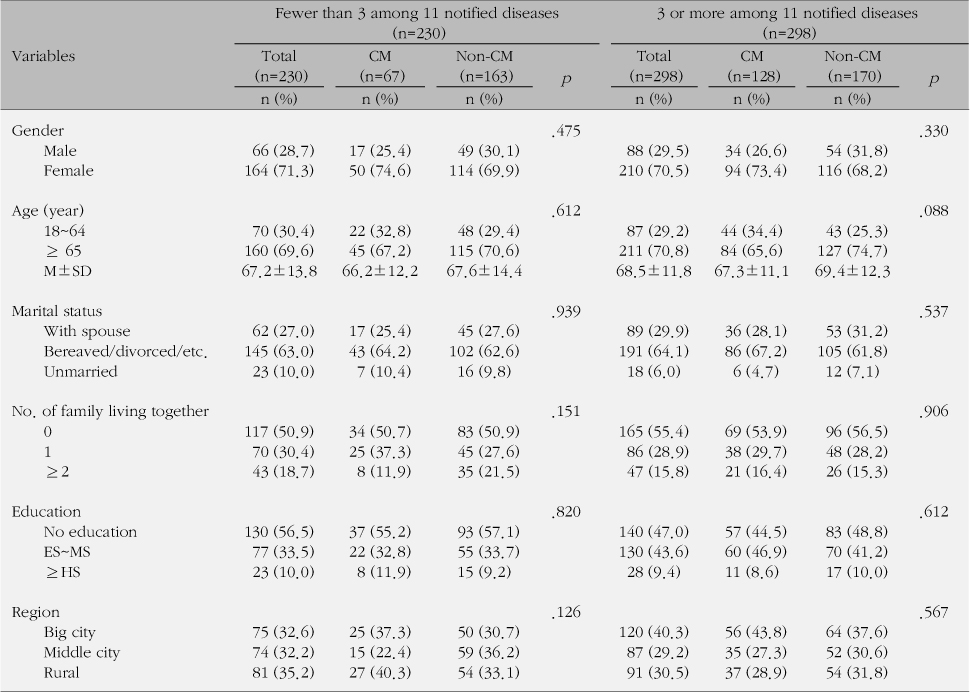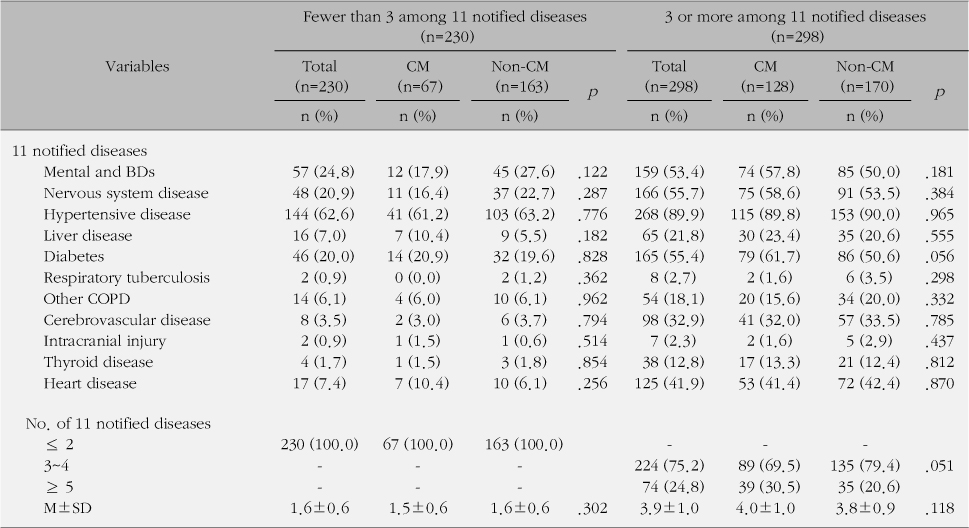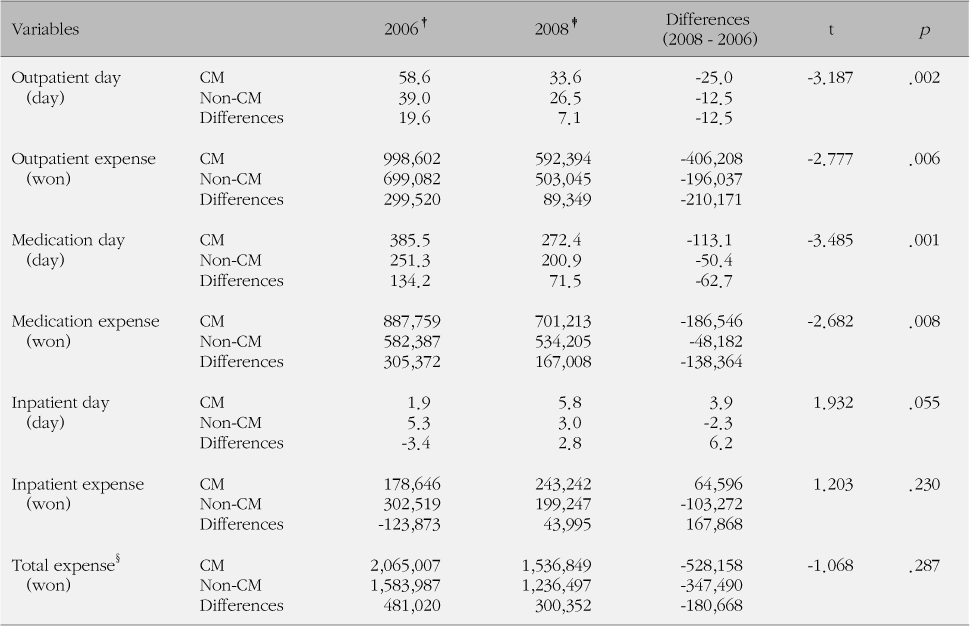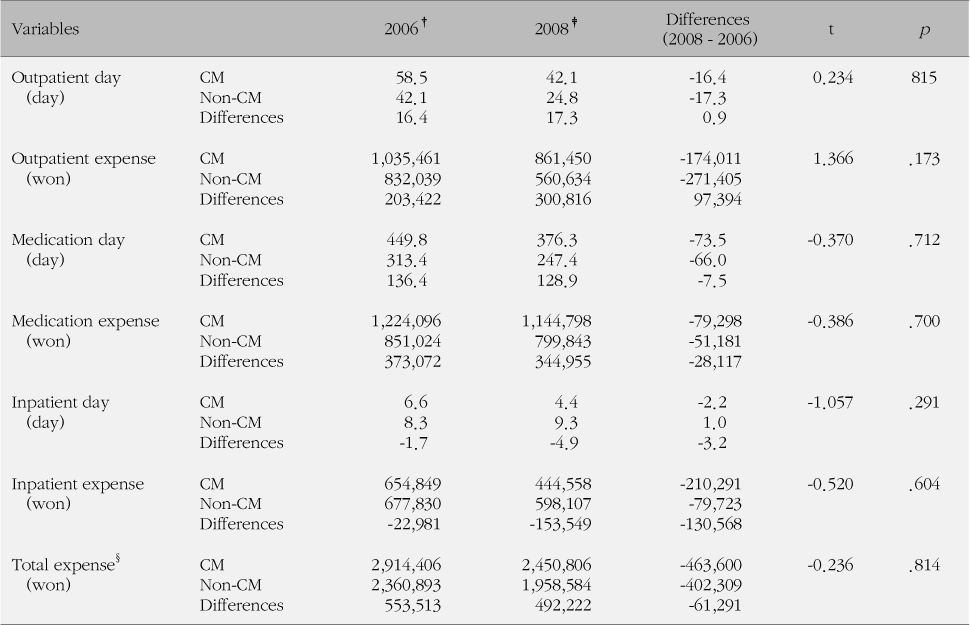References
1. Boult C, Giddens J, Frey K, Reider L, Novak T. Guided care: A new nurse-physician partnership in chronic care New York: Springer Publishing Company; 2009.
2. Boult C, Reider L, Frey K, Leff B, Boyd CM, Wolff JL, et al. The early effects of "guided care" on the quality of health care for multimorbid older persons: A cluster-randomized controlled trial. J Gerontol A Biol Sci Med Sci 2008;63(3):321–327.
3. Boyd CM, Shadmi E, Conwell LJ, Griswold M, Leff B, Brager R, et al. A pilot test of the effect of guided care on the quality of primary care experiences for multi-morbid older adults. J Gen Intern Med 2008;23(5):536–542.
4. Fitzgerald JF, Smith DM, Martin DK, Freedman JA, Katz BP. A case manager intervention to reduce readmissions. Arch Intern Med 1994;154(15):1721–1729.
5. Kim ES, Lee JY, Yu WS, Lee YP, Lim SJ, Cho JH, et al. A direction of case management for medicaid beneficiaries' appropriate utilization: Focusing on long term inpatient Seoul: Ministry of Health, Welfare and Family Affairs, Korea Human Resource Development Institute for Health and Welfare, & Institute of Case Management for Medicaid; 2009.
6. Kim JH. Reevaluation of the demonstration project for DRG payment system: Focusing on the evaluation methodology. Korean Health Econ Review 2002;8(1):59–89.
7. Lee IS, Lee YR, Kang HG. Evaluation of case management for medicaid Seoul: Ministry of Health & Welfare, & Yonsei University; 2004.
8. Mayo PH, Richman J, Harris HW. Results of a program to reduce admissions for adult asthma. Ann Intern Med 1990;112(11):864–871.
9. Ministry for Health, Welfare, & Family Affairs. 2008 Guideline of medicaid management Seoul: Author; 2008a.
10. Ministry for Health, Welfare, & Family Affairs. (11-1351000-000038-10). Health, Welfare and Family Affairs Seoul: Author; 2008b.
11. Ministry of Health & Welfare. 2007 Guideline of medicaid management Seoul: Author; 2007.
14. Oh JJ, Choi JM, Ji YG. Health services use and health status of medicaid beneficiaries according to medicaid policy change Seoul: Ministry of Health, Welfare and Family Affairs, Korea Human Resource Development Institute for Health and Welfare, & Dankook University; 2009.
15. Park EJ, Kim CM. Case management process identified from experience of nurse case managers. J Korean Acad Nurs 2008;38(6):789–801.
16. Powell SK. Case management: A practical guide to success in managed care 2nd edth ed. Baltimore: Lippincott Williams & Wilkins; 2000.
17. Rhee WH. Developing a case management strategies program for a Korean medical aid clients Seoul: Hanyang University; 2006. Unpublished doctoral dissertation.
18. Rich MW, Beckham V, Wittenberg C, Leven CL, Freedland KE, Carney RM. A multidisciplinary intervention to prevent the readmission of elderly patients with congestive heart failure. N Engl J Med 1995;333(18):1190–1195.
19. Riegel B, Carlson B, Kopp Z, LePetri B, Glaser D, Unger A. Effect of a standardized nurse case-management telephone intervention on resource use in patients with chronic heart failure. Arch Intern Med 2002;162(6):705–712.
20. Sadur CN, Moline N, Costa M, Michalik D, Mendlowitz D, Roller S, et al. Diabetes management in a health maintenance organization. Diabetes Care 1999;22(12):2011–2017.
21. Schraeder C, Fraser CW, Clark I, Long B, Shelton P, Waldschmidt V, et al. Evaluation of a primary care nurse case management intervention for chronically ill community dwelling older people. J Clin Nurs 2008;17(11c):407–417.
22. Shin YA, Shin HC, Shin HW, Park EJ, Hong SW, Shin SM, et al. Health services use and health status of medicaid beneficiaries according to medicaid policy change Seoul: Ministry of Health, Welfare and Family Affairs, Korea Human Resource Development Institute for Health and Welfare, & Institute of Case Management for Medicaid; 2008.
23. Shin YS, Shin HW, Hwang DK, Rho IC. Monitoring for medicaid financial efficiency (2006-20-1) Seoul: Korea Institute for Health and Social Affairs; 2006.
24. Shin YS, Shin HW, Hwang DK. Effectiveness of case management for medicaid I (2007-17-2) Seoul: Korea Institute for Health and Social Affairs; 2007.
25. Steffens B. Cost-effective management of type 2 diabetes: Providing quality care in a cost-constrained environment. Am J Manag Care 2000;613 Suppl. :S697–S703.
26. Sylvia ML, Griswold M, Dunbar L, Boyd CM, Park M, Boult C. Guided care: Cost and utilization outcomes in a pilot study. Dis Manag 2008;11(1):29–36.
27. Taylor CB, Miller NH, Reilly KR, Greenwald G, Cunning D, Deeter A, et al. Evaluation of a nurse-care management system to improve outcomes in patients with complicated diabetes. Diabetes Care 2003;26(4):1058–1063.
28. Weinberger M, Oddone EZ, Henderson WG. Does increased access to primary care reduce hospital readmission? N Engl J Med 1996;334(22):1441–1447.
29. West JA, Miller NH, Parker KM, Senneca D, Ghandour G, Clark M, et al. A comprehensive management system for heart failure improves clinical outcomes and reduces medical resource utilization. Am J Cardiol 1997;79(1):58–63.
30. Yu WS. Outcome and Medium-long term range plan of basic medical security system. Proceedings of Symposium Celebrating the 30th Anniversary of Korea Medicaid Aid Seoul: Ministry of Health & Welfare, National Health Insurance Corporation, Health Insurance Review & Assessment Service, & Korea Human Resource Development Institute for Health and Welfare; 2007.



